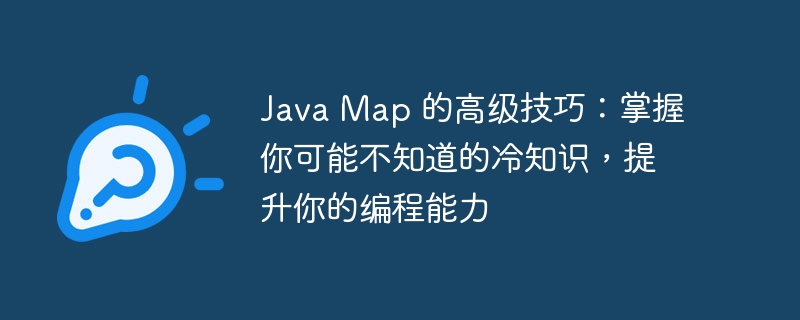

php editor Baicao will take you to explore the advanced techniques of Java Map, reveal the cold knowledge that may be ignored, and help you improve your programming skills. Map is one of the commonly used data structures in Java. An in-depth understanding of its advanced usage will help optimize code logic and improve program efficiency. It will also make you more comfortable in the programming field. Let us uncover the mystery of Java Map together and open up a new realm of programming skills!
The Map interface is a data structure used to store key-value pairs in the Java collection framework . It allows you to use keys to find and retrieve associated values. The Map interface provides many useful methods, including put(), get(), remove(), containsKey(), containsValue(), size(), isEmpty(), etc.
Implementation of Map
The most commonly used Map implementations in Java are HashMap and TreeMap. HashMap is a hash table-based Map implementation that quickly finds and retrieves values by computing hashes of keys. TreeMap is a Map implementation based on a red-black tree that sorts the keys in ascending or descending order.
Map.Entry
Map.Entry interface represents key-value pairs in Map. It provides some useful methods, including geTKEy(), getValue(), setValue(), etc. You can use Map.Entry to iterate over key-value pairs in a Map.
forEach() and lambda expressions
Java 8 introduced the forEach() method and lambda expressions, which make traversing Map easier and more concise. You can use the forEach() method and lambda expressions to iterate over the key-value pairs in a Map and perform specific operations on each key-value pair.
Common usage of Map
Map has a wide range of applications in Java, including:
Advanced Map Tips
In addition to basic usage, Map also provides many advanced techniques that can help you improve programming efficiency and solve complex problems. Here are some commonly used advanced techniques:
Map<String, Integer> map = new TreeMap<>(Collections.reverseOrder());
Summarize
Java Map is a powerful data structure that provides many useful methods and techniques. By mastering these advanced techniques, you can improve your programming efficiency and solve complex problems.
The above is the detailed content of Advanced skills of Java Map: Master cold knowledge you may not know and improve your programming skills. For more information, please follow other related articles on the PHP Chinese website!




